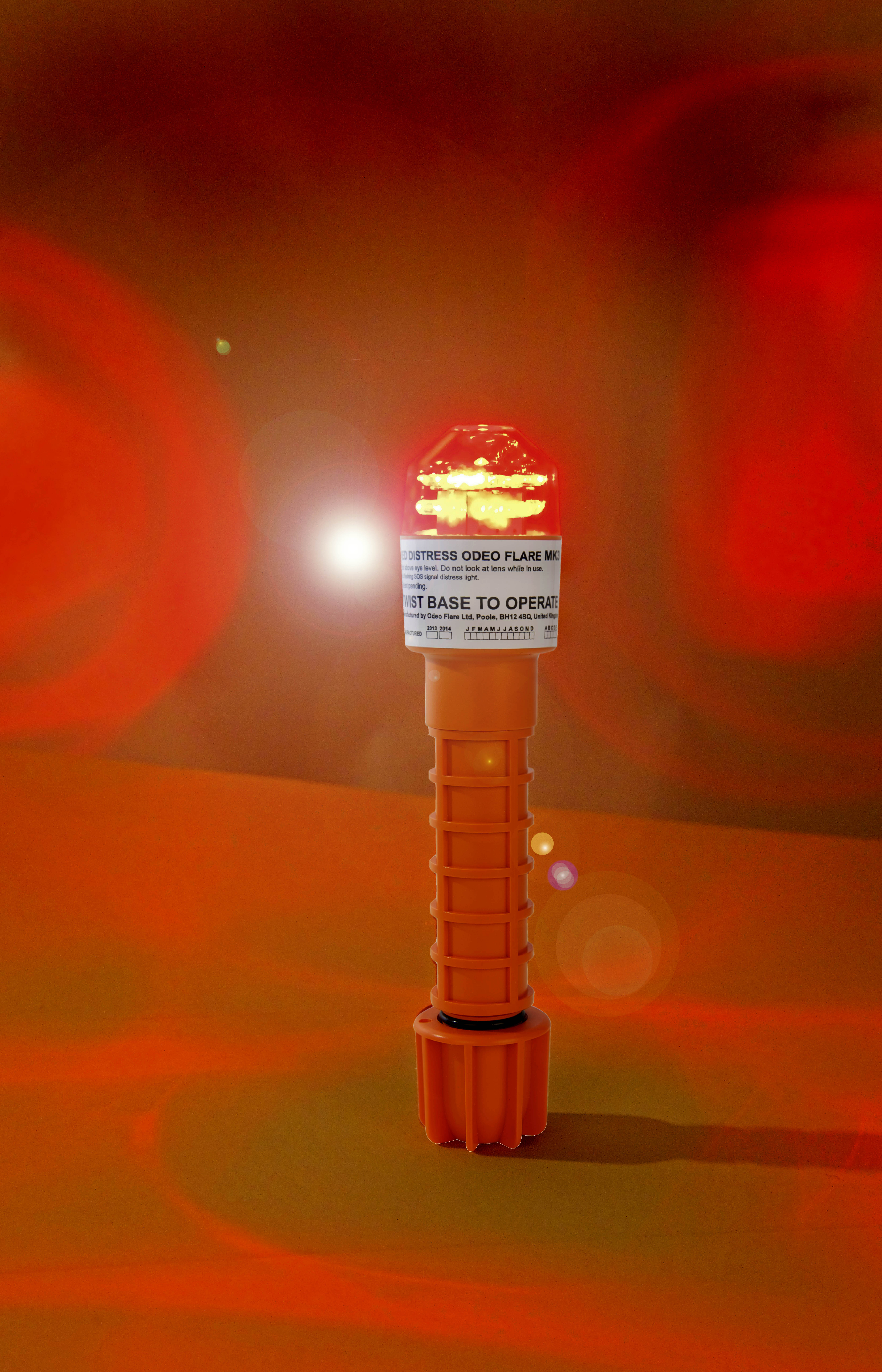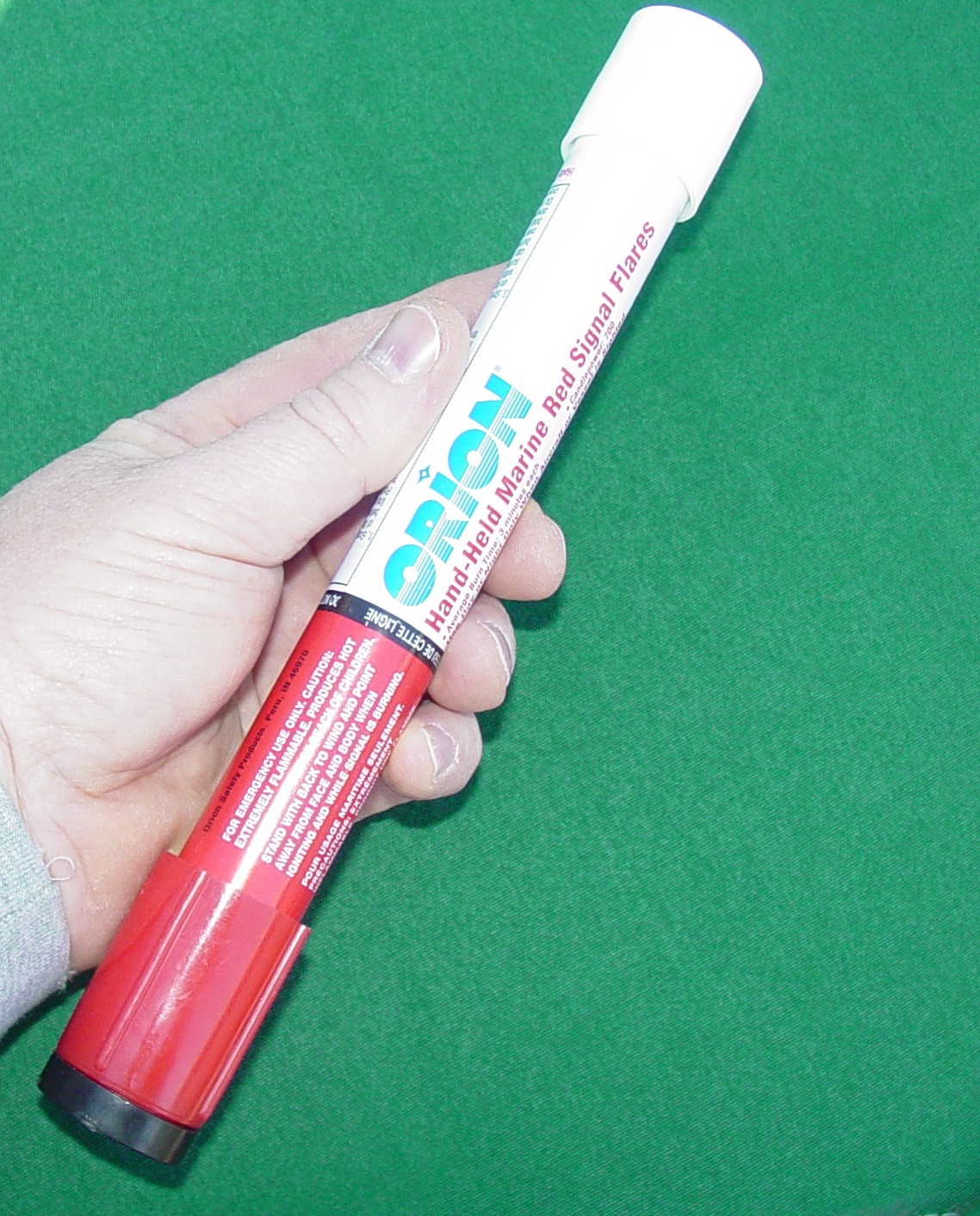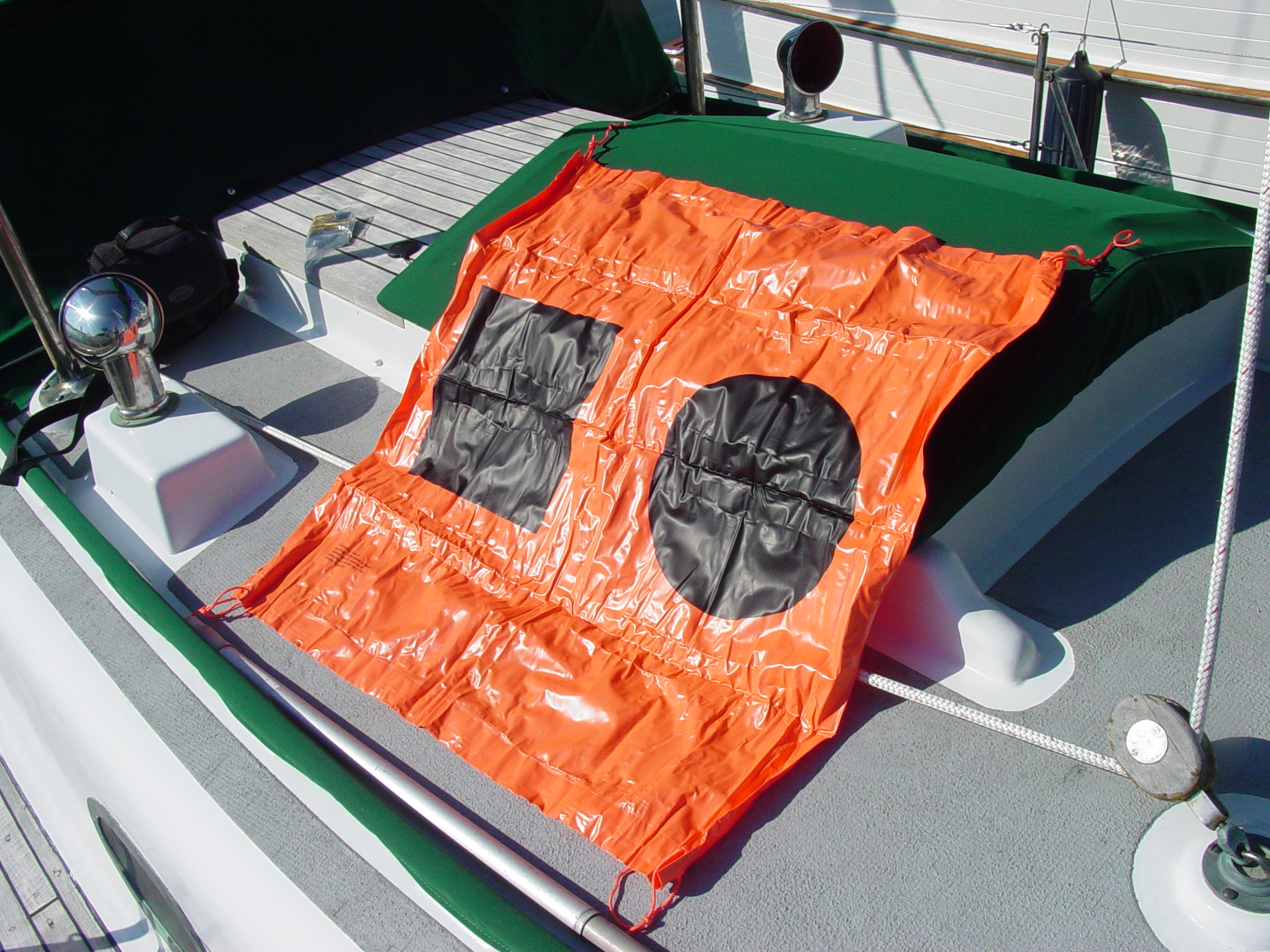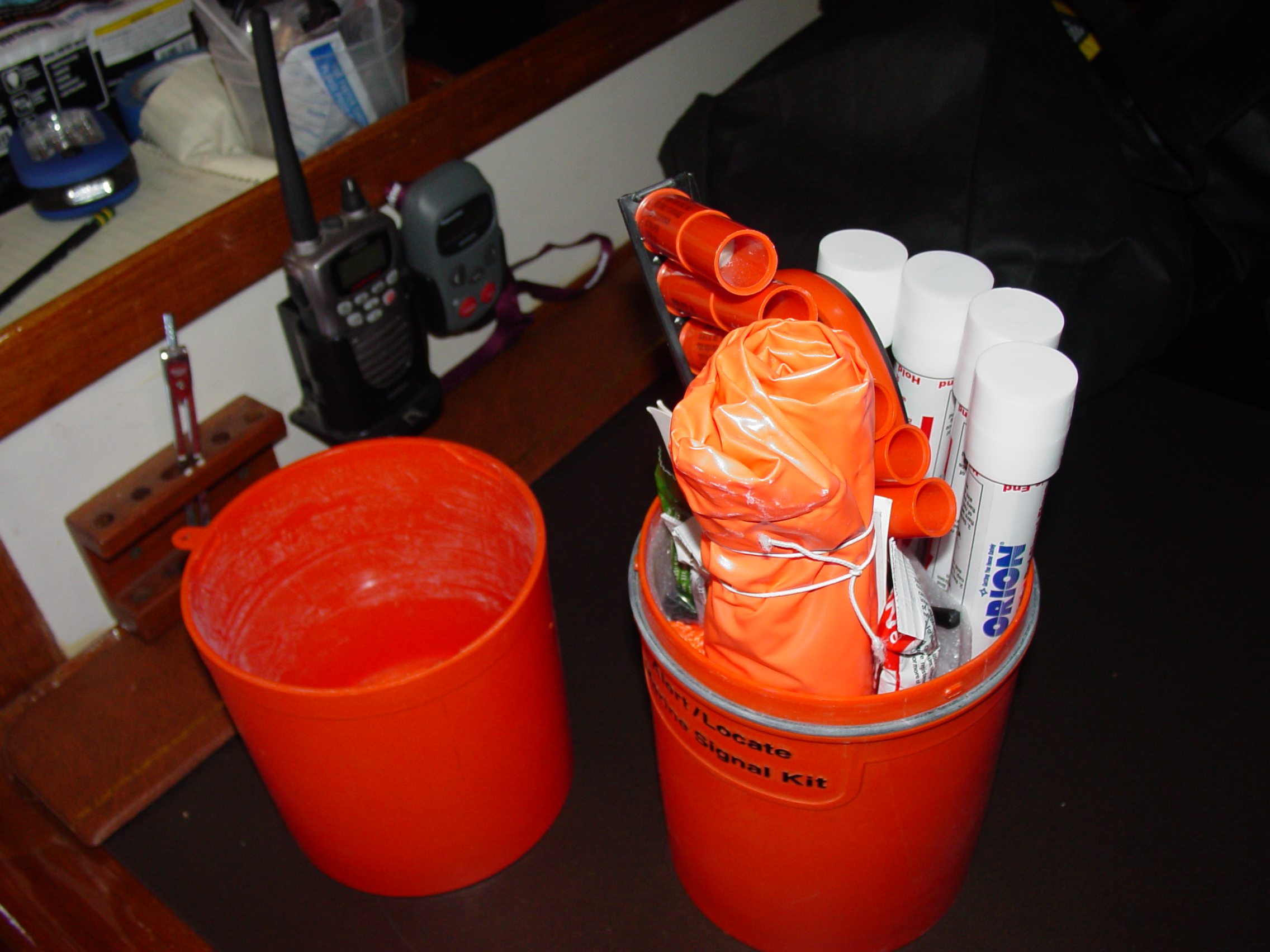Can You See Me Now? The ABCs of Visual Distress Signals

Despite the importance of modern options such as EPIRBs, PLBs and Digital Selective Calling (DSC), old-school visual distress signals remain both relevant and are the only type of distress signals boaters are required by law to have onboard. Here’s a look at the types of approved visual distress signals available, along with the pros and cons associated with each.
Different Categories
Visual distress signals fall into two broad categories — pyrotechnic and non-pyrotechnic devices. These can be further divided into day and night use, although some are suitable for both. Examples of pyrotechnic devices include red flares (hand-held or aerial), orange smoke flares or canisters, etc. Non-pyrotechnical signals include any other type of visual distress signal, from mirrors to flags.
Each signaling device must be U.S. Coast Guard or SOLAS (Safety of Life at Sea) approved, with any combination of pyrotechnic and/or non-pyrotechnic distress signals totaling three for daytime and three for night use satisfying the minimum federally mandated requirements.
Meeting the minimum requirements, however, does not mean a vessel is carrying all the signaling devices that should be onboard. Like winning lottery numbers, a boater in distress can’t have too many emergency-signaling devices when the need arises. As a marine surveyor, my opinion is that every vessel should carry at least double what’s required by law — more when coastal or offshore cruising.
A Flare For the Dramatic
Pyrotechnical flares are relatively inexpensive and a popular choice with boat owners, who typically meet U.S. Coast Guard carriage requirements by carrying red handheld or aerial flares suitable for day and night use. SOLAS flares are approved by the International Maritime Organization (IMO) for use on the high seas. While more expensive, they typically exceed U.S. Coast Guard standards for luminosity and burn time. Many recreational boaters choose SOLAS devices for the added margin of safety they provide.
Flares are required by law to have a 42-month service life and have their expiration date stamped on them. A typical boater will probably have a number of expired flares onboard for “back-ups” (everyone hates throwing away things they had to buy, but didn’t use). While these can remain operational years past their expiration date, the chemicals used in flares will deteriorate over time, so don’t be surprised if those expired back-ups are harder to light, have shorter burn times, decreased altitudes or simply fail to work when the time comes. For reliable back-ups, carry spares that are within their expiration date.
Flares make excellent distress signals, but they do have drawbacks. They can only be used once and can cause personal injury and property damage if not handled properly. Flares generate molten slag while burning, so hold them well overboard when firing or lighting them and during use.
Aerial flares and launchers should be treated with the same respect as firearms. Some states may even consider the pistol launcher for meteors and parachute flares to be a firearm, so ask about local laws when purchasing.
Non-Pyrotechnic Visual Distress Signals
The only U.S. Coast Guard currently approved, non-pyrotechnic visual distress signals are the Orange Distress Flag and the Electric Distress or SOS light. The distress flag is a day signal consisting of a black square and ball on an orange background. Size-wise, it has to be at least 3’ x 3’ (.91m x .91m) and marked as meeting Coast Guard requirements in 46 CFR 160.072. While flares are considered more effective by many, distress flags have the advantage of working without intervention for as long as they are displayed. A distress flag’s visibility can also be significantly increased by attaching it to a paddle of boathook and waving it about or by flying it from the highest point of a vessel.
Electric distress lights are for night use only. They must automatically flash the international SOS distress signal (three short flashes, three long flashes, three short flashes) and be labeled as meeting Coast Guard requirements stated 46 CFR 161.013. Ordinary flashlights are not acceptable substitutes for an electric distress light, as they must be manually flashed and are normally not bright enough.
Modern versions of the electronic distress light include the Sirius SOS Distress Light, Orion Electronic SOS Beacon Kit and the Weems & Plath C-1001 SOS distress light. Two things to note about each of these products. First, they are not “electronic flares” despite some advertising claims you may see — they are distress lights. Secondly, they are approved for nighttime use only, which is why they come with a distress flag. This combination enables them to meet carriage requirements for day and night time emergency signals.
Although not Coast Guard approved, one of the best all-around, non-pyrotechnic distress signaling devices is a signal mirror. Compact and simple to operate, signal mirrors have proven their worth in numerous rescues. In normal sunlight, flashes from a good signal mirror can be seen up to 50 miles away depending upon atmospheric conditions (the record distance during an at sea rescue is 105 miles). They even work on bright overcast days and moonlight nights to an extent.
While there are reportedly cases where sailors have been rescued using the reflective holographic sticker on their credit card, don’t be tempted to rely on that or an old CD — spend a little money and get the real thing.

Electric Flares
While Coast Guard approval for non-pyrotechnic visual distress signals is currently limited to the distress flag and electric SOS distress light, that doesn’t mean true electronic flares are not being developed.
Products such as the MK3 LED flare by ODEO and the Ocean Signal RescueME EDF1 electric distress flare will hopefully see approval as an alternative to pyrotechnic flares at some point. Although not currently U.S. Coast Guard approved, both are effective, reusable, long lasting and in my opinion are more recognizable as a visible distress signal than an SOS distress light. Safety-conscious mariners should not hesitate to carry them in addition to the required, currently approved visual distress signals (there are no restrictions for carrying alternative electric signal devices and Coast Guard approval is not required to use them).
Finally, no distress signal will do you any good if you can’t find them in an emergency. Store them in a red or orange watertight container marked “Distress Signals” and keep it in a dry, but readily accessible place.
By Capt. Frank Lanier
Captain Frank Lanier is a SAMS® Accredited Marine Surveyor with more than 40 years of experience in the marine and diving industry. He’s also an author, public speaker, and multiple award-winning journalist whose articles on seamanship, marine electronics, vessel maintenance and consumer reports appear regularly in numerous marine publications worldwide. He can be reached via his website at www.captfklanier.com.



